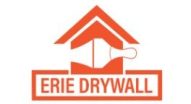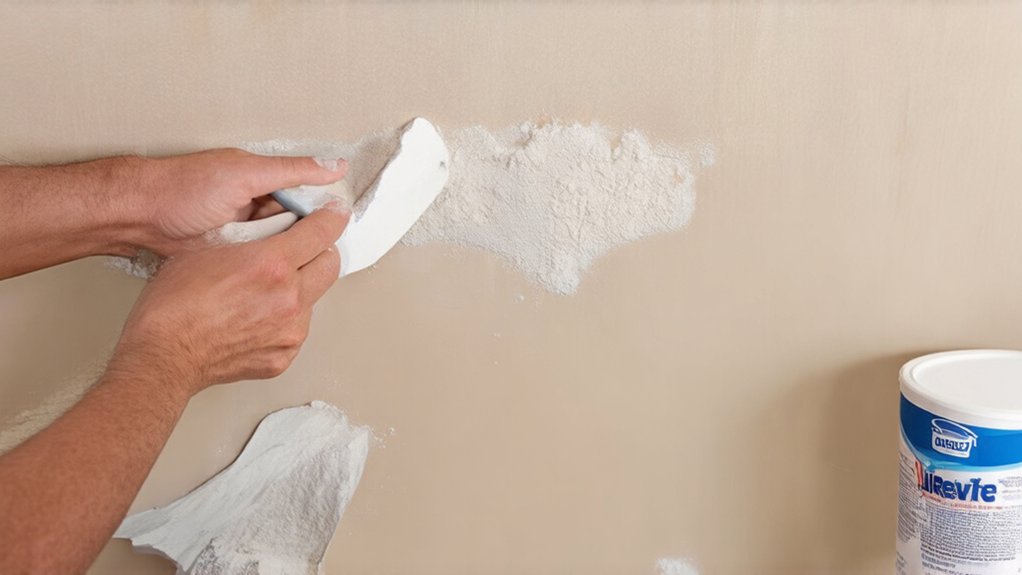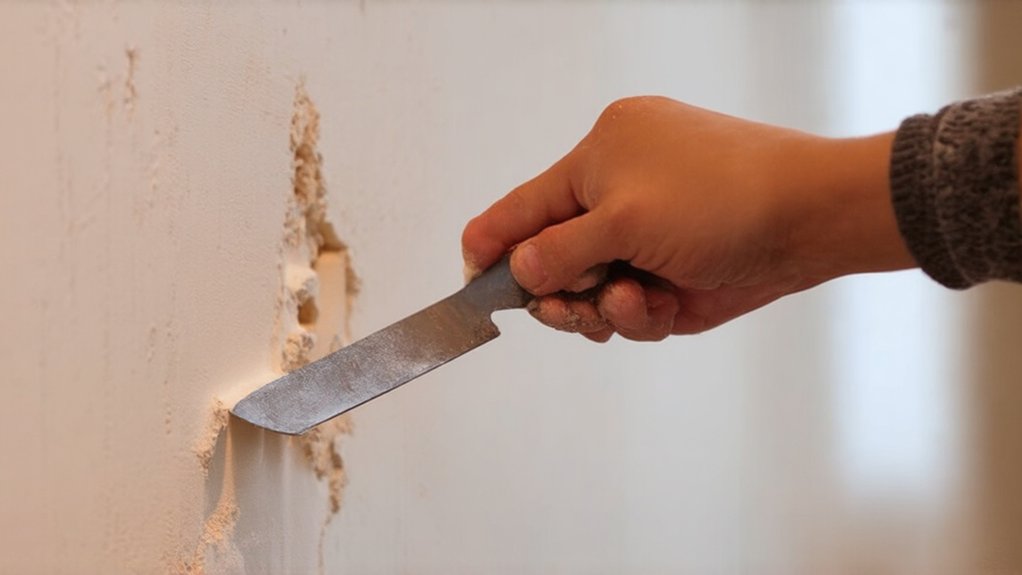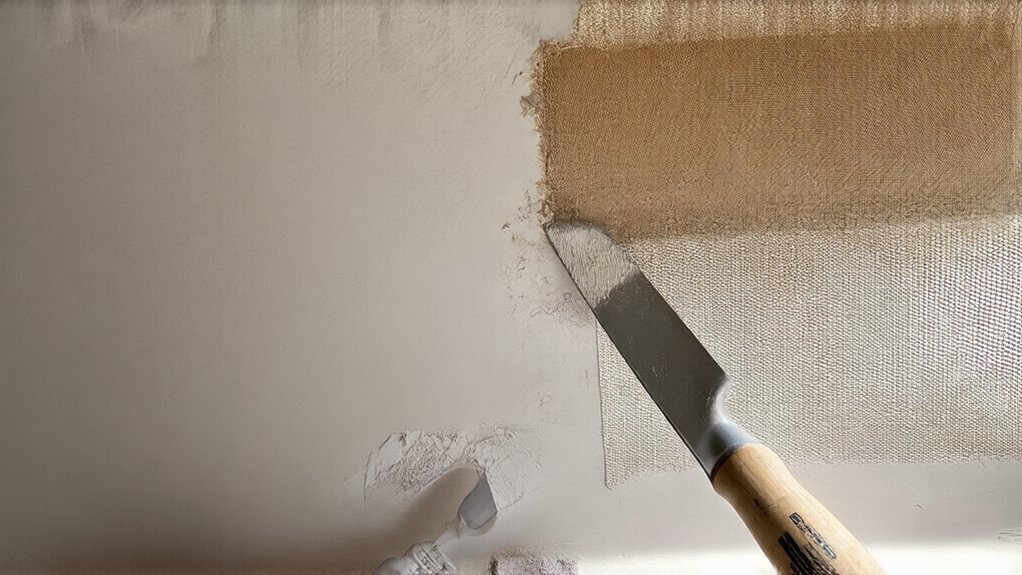As a landlord, you'll encounter various drywall damages like nail holes, scuffs, and cracks. Keep basic repair tools on hand and learn simple DIY techniques for minor issues. For small repairs, use spackling compound and sand gently. When facing extensive water damage or large holes, consider professional services. By balancing cost-effective strategies with timely repairs, you'll protect your property's value and maintain tenant satisfaction. More observations await.
Types of Drywall Damage in Rental Properties
Rental properties often encounter various types of drywall damage that can occur during a tenant's occupancy. Small nail holes, scuffs, and minor cracks are common issues you'll likely face. Professional drywall contractors can help landlords efficiently address and repair these damages with expertise and modern tools. Hidden damage behind walls, such as water leaks or pest infestations, can create uneven surfaces that require more extensive repairs. Larger holes from furniture moving, accidental impacts, or improper hanging of decorations can compromise the wall's structural integrity. Identifying these damages early helps you address problems quickly and maintain your property's value. Understanding the different types of drywall damage enables you to make informed repair decisions and protect your investment.
Essential Tools and Materials for Drywall Repair
Five essential tools and materials can make your drywall repair process smooth and professional. You'll need a utility knife for precise drywall cutting techniques, ensuring clean edges and minimal waste. A putty knife will help you spread joint compound application evenly, creating a seamless finish. Sandpaper smooths rough surfaces, while drywall tape prevents cracks from reappearing. Don't forget a reliable drywall patch kit, which includes mesh or backing material for small to medium-sized holes. These tools will help you restore your rental property's walls efficiently, saving time and maintaining a professional standard that tenants will appreciate. Professional drywall contractors in Erie, PA recommend always having these tools on hand for quick and effective repairs.
DIY Repair Techniques for Small to Medium Damage
Because wall damage happens unexpectedly, homeowners and property managers need reliable DIY repair strategies for small to medium-sized holes and cracks. Simple patch techniques can save you time and money when addressing minor wall imperfections.
You'll want to start by cleaning the damaged area, then applying spackling compound with a putty knife, smoothing it evenly across the surface. After the compound dries, sand the area gently to create a seamless finish.
For textured surface restoration, consider using a matching texture spray to blend the repaired section with the surrounding wall. With practice, you'll become an expert at these essential repair skills.
When to Hire Professional Drywall Repair Services
While DIY repairs can handle many wall damages, some situations demand professional skill. Complex issues like extensive water damage, large holes, or structural concerns require expert intervention.
When scheduling drywall repair, consider the extent of damage and your technical abilities. Professional contractors bring specialized tools, precise techniques, and guaranteed workmanship that surpass typical DIY efforts. They'll efficiently assess the damage, provide accurate cost estimates, and negotiate repair costs that fit your budget.
Cost-Effective Strategies for Landlords
Smart landlords understand that drywall repair doesn't have to drain their bank account. By implementing budget-friendly options, you can minimize repair costs while maintaining your property's quality.
Consider learning basic repair techniques that don't require professional intervention, such as patching small holes and addressing minor wall damages. Stock up on affordable repair materials like joint compound, sandpaper, and mesh patches during sales. You'll save money by handling simple repairs yourself and reserving professional services for more complex issues.
These cost-saving measures help protect your investment without compromising your rental property's appearance and value.
Frequently Asked Questions
Can Tenants Be Charged for Drywall Damage Caused by Normal Wear and Tear?
You can't charge tenants for normal wear and tear damages. Small holes, scuffs, and minimal wall imperfections that naturally occur during tenant lifestyle factors are typically the landlord's responsibility to repair.
How Often Should Landlords Inspect Rental Properties for Potential Drywall Issues?
You'll want to perform periodic inspections every 3-6 months. Frequent walk-throughs help catch potential drywall issues early, showing tenants you're a caring landlord who's proactively maintaining their living space and protecting your investment.
Are Temporary Drywall Patches Acceptable Between Tenant Occupancies?
You shouldn't rely on temporary patches between tenants. As a responsible landlord, you'll want to complete proper repairs that maintain your property's integrity and demonstrate your commitment to providing a high-quality living space for your residents.
What Documentation Should Landlords Keep Regarding Drywall Repairs?
You'll want to document pre-repair conditions with dated photos, detailed notes from move-in inspections, and before/after repair images. Keep repair records, receipts, and contractor details to protect yourself and maintain transparency with future tenants.
Can Landlords Legally Deduct Drywall Repair Costs From Security Deposits?
You can deduct drywall repair costs from a security deposit if the damage exceeds normal wear and tear, complies with local building codes, and follows your state's specific security deposit laws. Always document the damage thoroughly.



